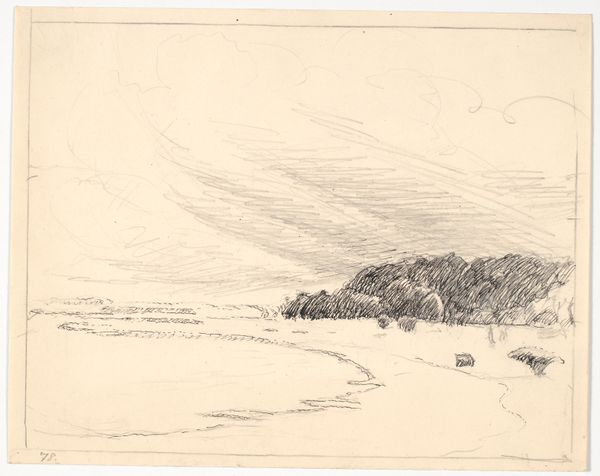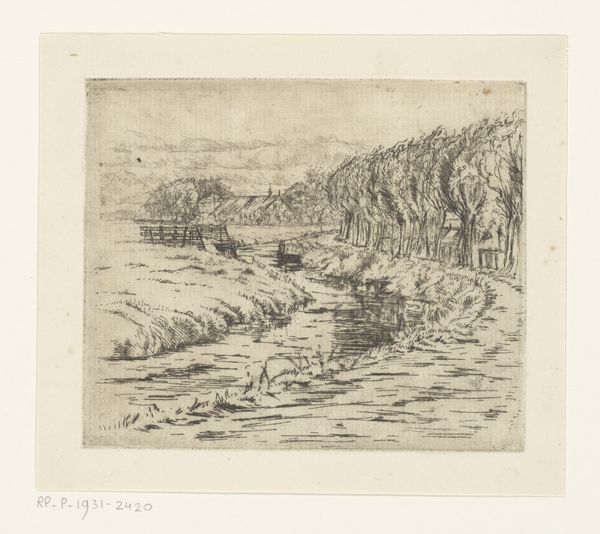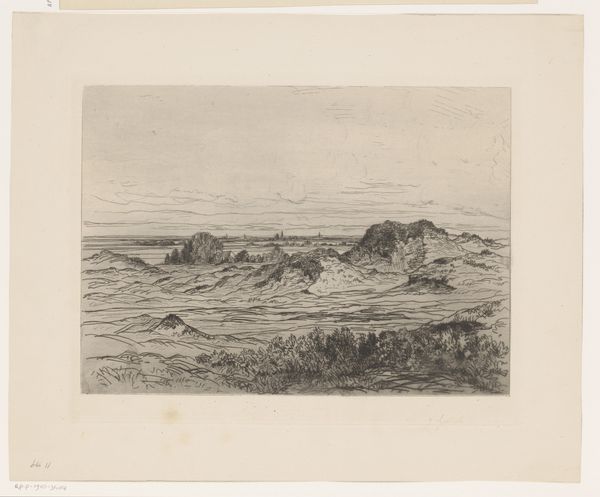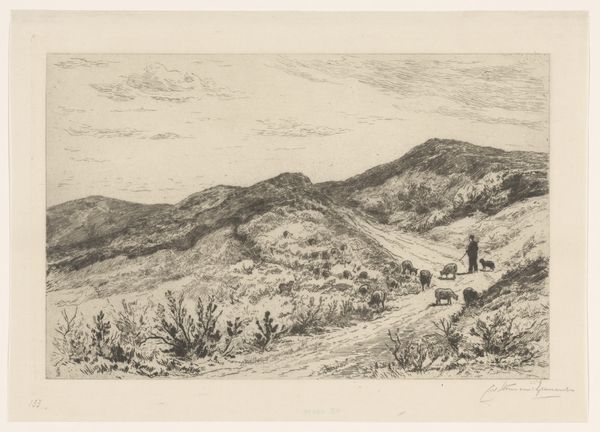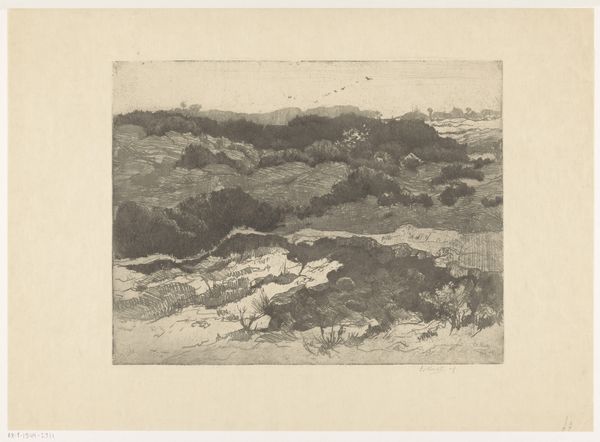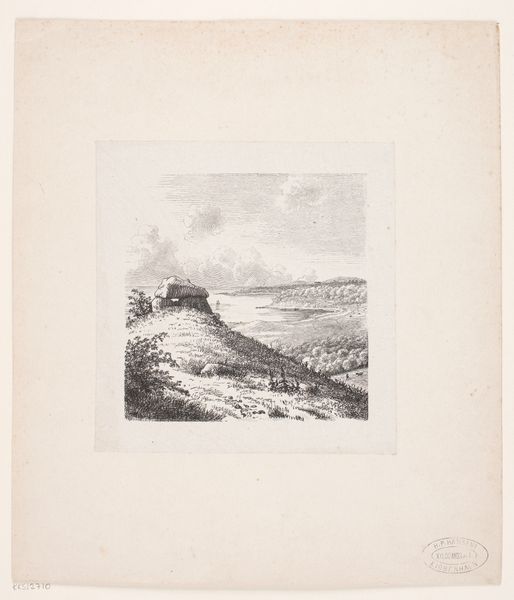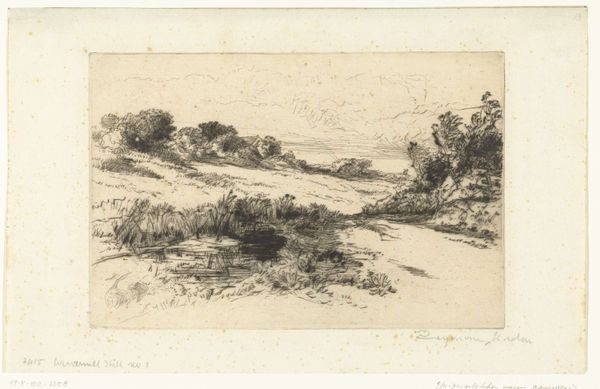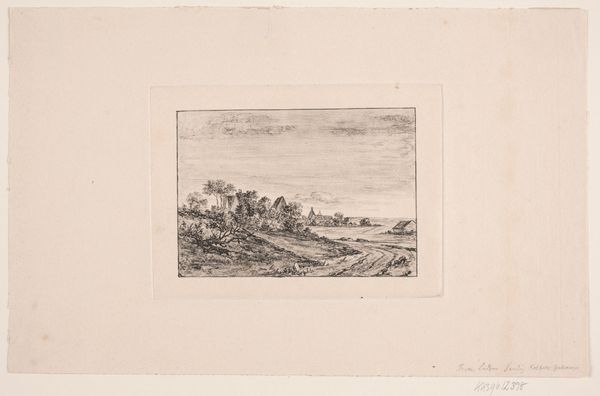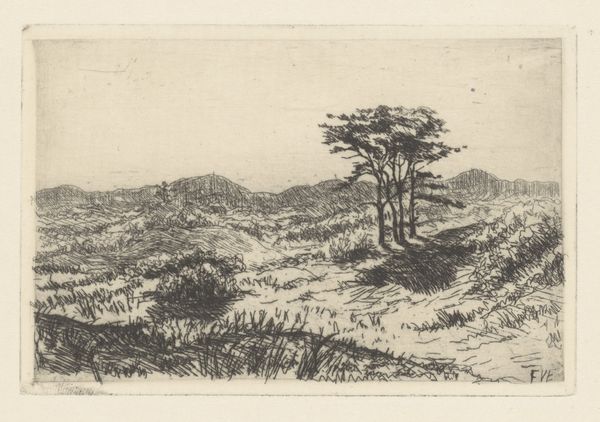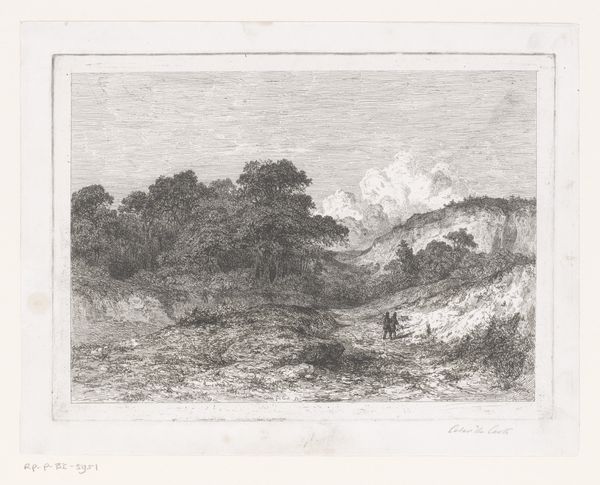
Illustration til digt af H.V. Kaalund, "Eftersommeren" 1891 - 1895
0:00
0:00
drawing, print, etching, ink
#
drawing
#
narrative-art
#
ink painting
# print
#
etching
#
pencil sketch
#
landscape
#
ink
#
pencil drawing
#
pen-ink sketch
Dimensions: 261 mm (height) x 249 mm (width) (bladmaal)
Curator: The first thing that strikes me about this Waldemar Böhme illustration from around 1891 to 1895, is the tranquility it exudes. What's your initial reaction? Editor: Serenity is definitely present. But beneath that calm surface, I also see a potent commentary on land use and labor, a visualization of rural life under pressure. The piece feels incredibly intimate; I imagine that is, in part, due to the medium being a relatively small etching. Curator: Intimacy is spot on. This illustration, crafted with ink and etching techniques, visualizes H.V. Kaalund's poem, "Eftersommeren" which translates to "Late Summer." Böhme captures the essence of the poem, offering a poignant meditation on nature's rhythms and the passage of time. See the symbolic weight of the shepherd and his flock slowly crossing over the land. Editor: Right, the shepherd becomes symbolic, embodying a type of rural, masculine archetype, maybe a quiet custodian of the land. The very traditional depiction can be a visual strategy; it can invite the viewer to long for something stable rooted in tradition and nature even if that yearning veils socio-political issues tied to urbanization or class struggle. It's almost pastoral propaganda. Curator: An intriguing take! Looking at the landscape itself, consider the meandering coastline meeting the gentle hills. I am reminded how these recurring forms can reflect deeper, cyclical patterns of life, the seasons turning. Böhme doesn't just present a scene; he offers an interpretation of how we connect to these unchanging rhythms. Editor: It speaks volumes how landscapes are never neutral. By linking his art to Kaalund’s poem, Böhme embeds his illustrations in layers of cultural significance. Poems, just like art, carry emotional landscapes shaped by ideologies and personal sentiments. Consider who gets represented here. What stories are uplifted through landscape art, and who might be missing? Curator: I hadn't quite considered the absence, only what's visibly present. The cultural coding within such a seemingly simple illustration offers far more complexity than one might initially believe. Editor: Precisely. It forces us to interrogate our expectations when viewing "peaceful" pastoral scenes, doesn’t it? What this encoding does, whether intentional or not, is reinforce the power structures underpinning that calm facade. Curator: Well, considering your insights, I will certainly never look at idyllic landscape art the same way again. I'm left pondering about what lies hidden just beneath the surface.
Comments
No comments
Be the first to comment and join the conversation on the ultimate creative platform.
